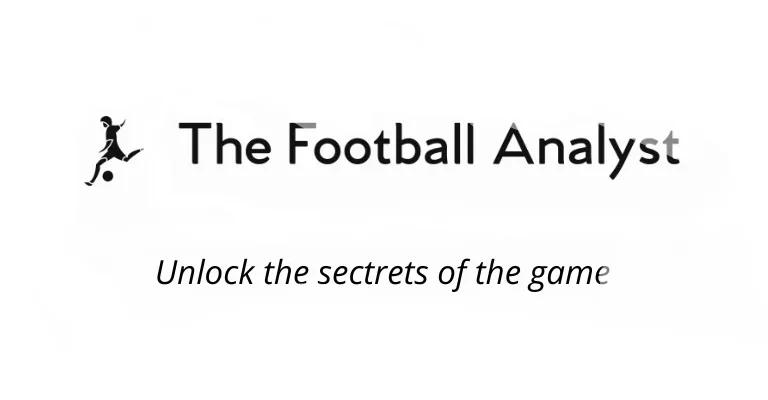In this article, we delve into the tactical strategies employed by Ronald Koeman as the head coach of the Netherlands national team. Known for his astute footballing mind and deep understanding of the game, Koeman has revitalized the Dutch squad with a blend of traditional Dutch principles and modern tactical innovations. We will explore the formations, key player roles, and strategic adjustments that define Koeman’s approach, shedding light on how he has transformed the Netherlands into a formidable force on the international stage. Join us as we dissect the tactical blueprint of Ronald Koeman and the Oranje.
Build-up
Low Build-up
In the low build-up, Koeman sets his team up in a 4-2-5 formation, with the goalkeeper playing between the center-backs and a box midfield in the middle.
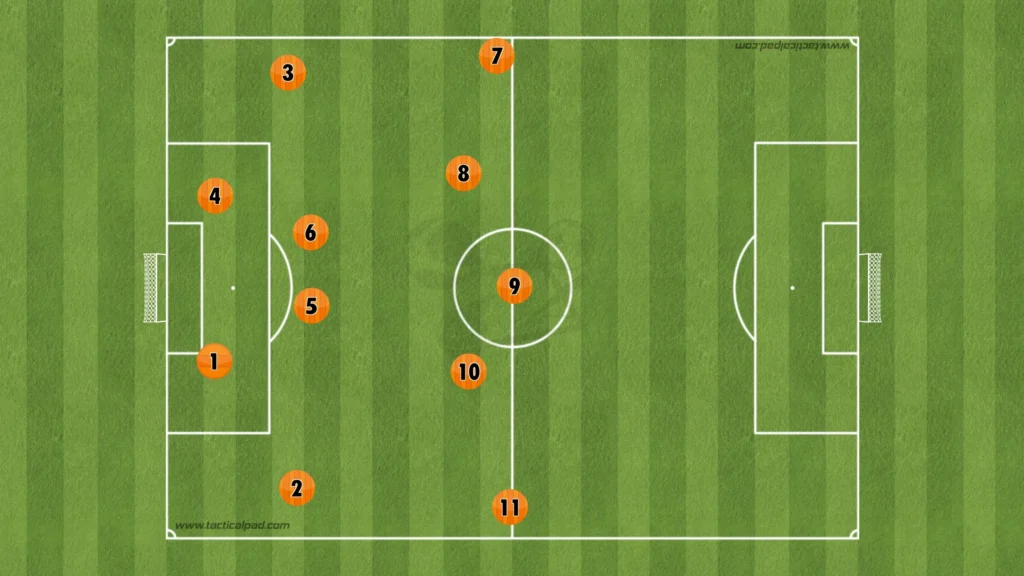
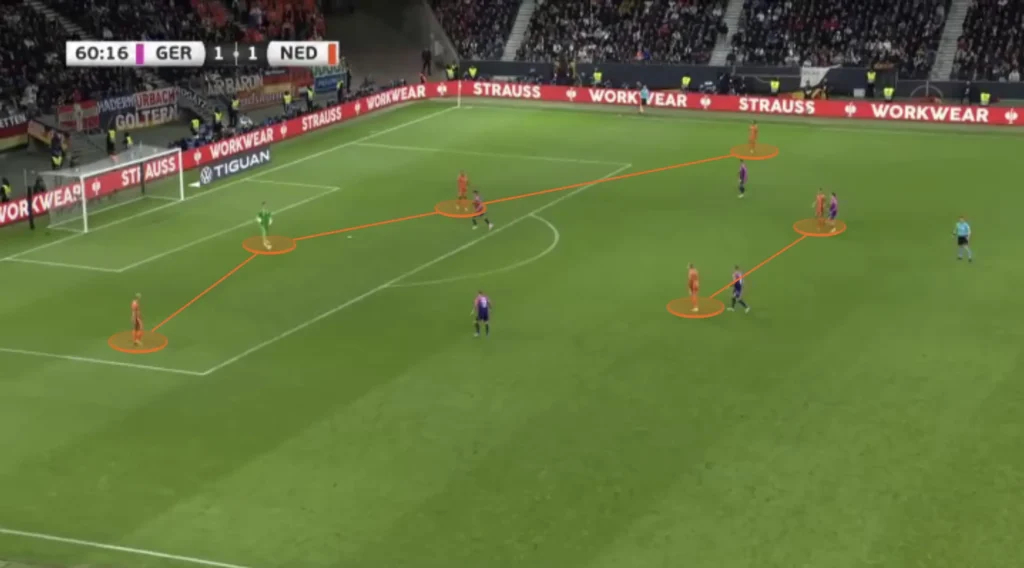
They often drop with the attacking midfielders and like using the goalkeeper, which creates numerical superiorities, allowing them to beat the press.
High Build-up
Koeman’s team sets up in a 1-3-2-5 formation in the high build-up, the same as in the low build-up without the goalkeeper between the center-backs.
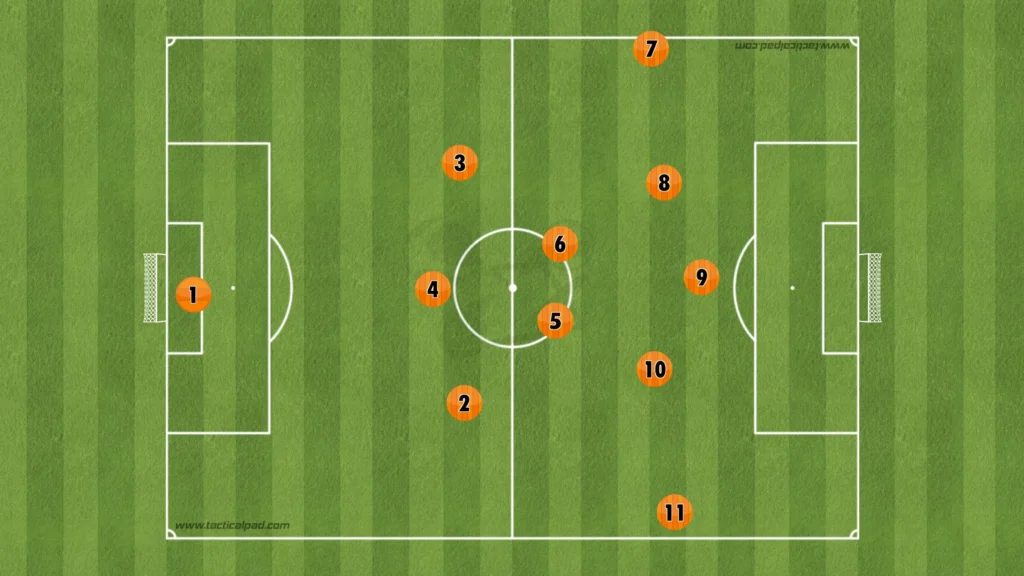
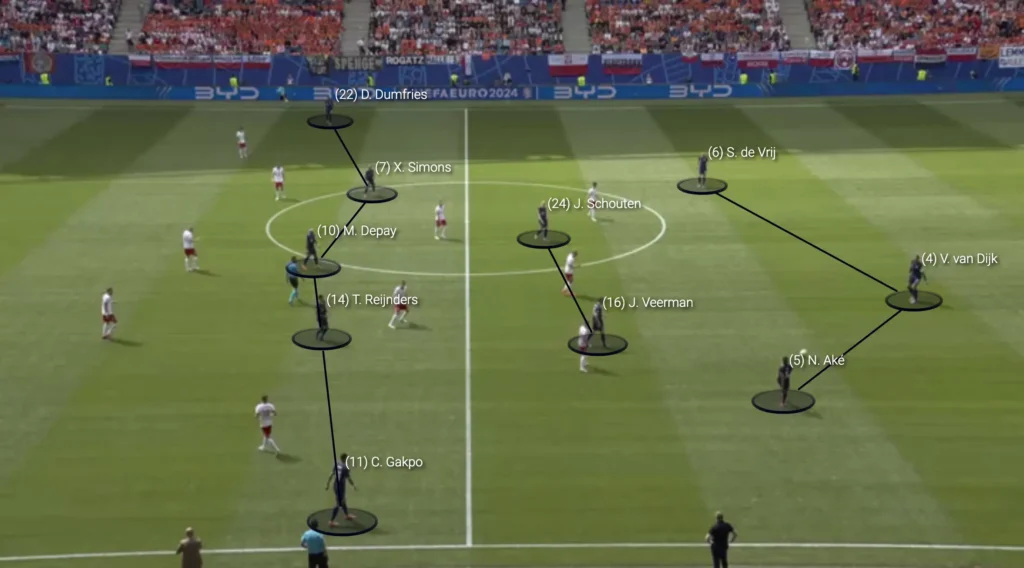
Having four central midfielders(two holding and two attacking) creates more options in the center and less space between the players. Koeman likes this because he prioritizes playing through the middle. He needs one player high and wide to pull apart the backline while the rest create numerical advantages in the midfield areas. This builds good conditions in defensive transitions, allowing more players to press when they lose the ball. Another purpose for keeping many players in the middle is to shorten the distance between them. This shortens the length of the passes, which naturally shortens the time between passes. This means the opposition players will have less time to push up and press, giving the Dutch players more time and control.
High Backline
A massive aspect of Koeman’s high possession build-up is they keep a high backline. This helps in the counterpress because they get closer to the center. Having more players close to the center who can win the ball back makes it difficult for the opposition to do anything when they win possession. Furthermore, the high backline shortens the distance between players, shortening the time and length of the passes and preventing the opposition from pushing up their defense.
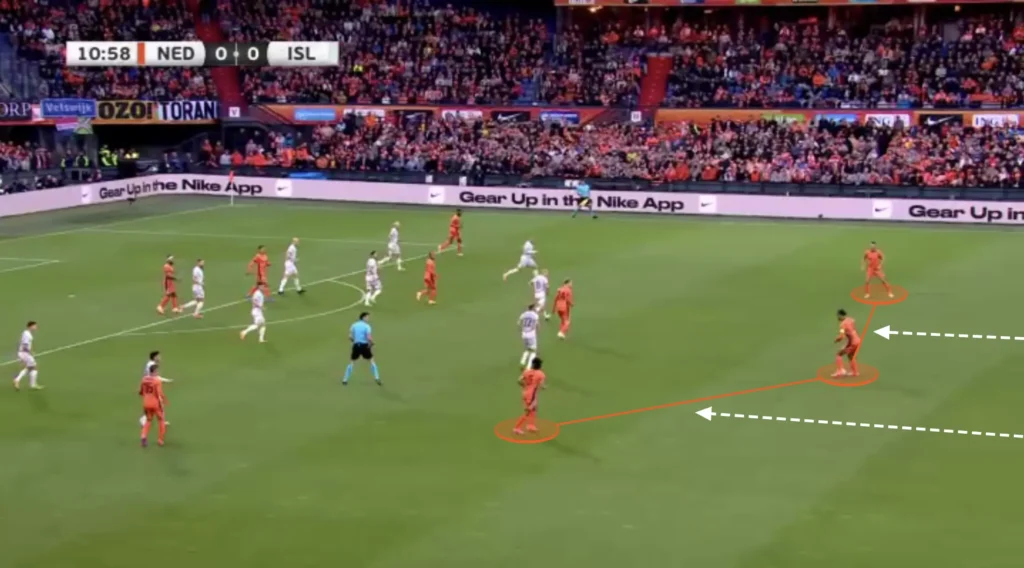
Finding the Pockets
Koeman’s teams always try to find the attacking midfielders in the pockets. They will be positioned behind the opposition’s midfield and the midfield numerical superiority usually means that at least one will be open. The striker and wingers will be pinning the opposition backline, not allowing them to push up on the attacking midfielders when they receive the ball. The Netherlands will mainly look for diagonal passes from the holding midfielders, breaking lines and finding these dangerous players who will turn and drive at the defense.
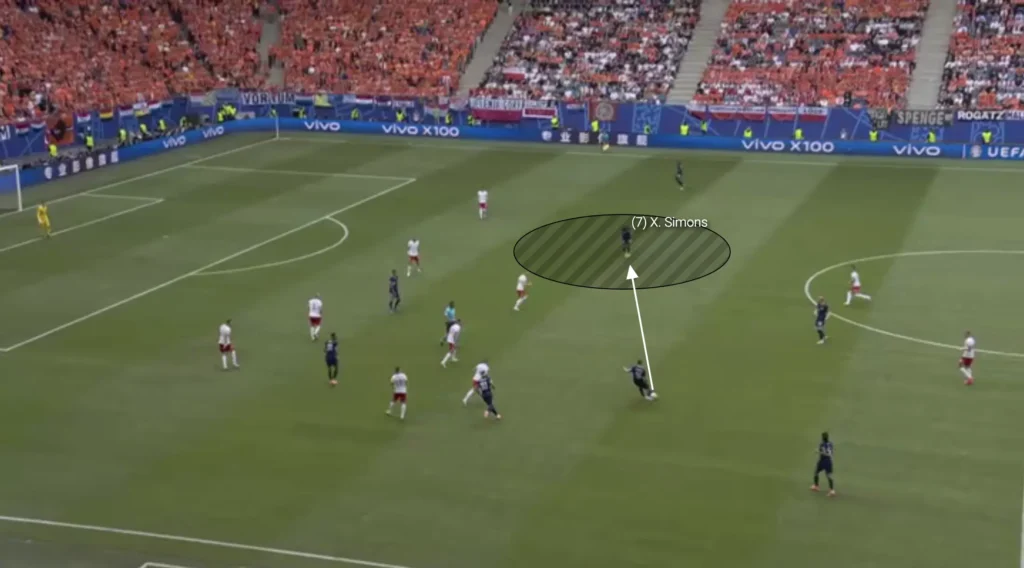
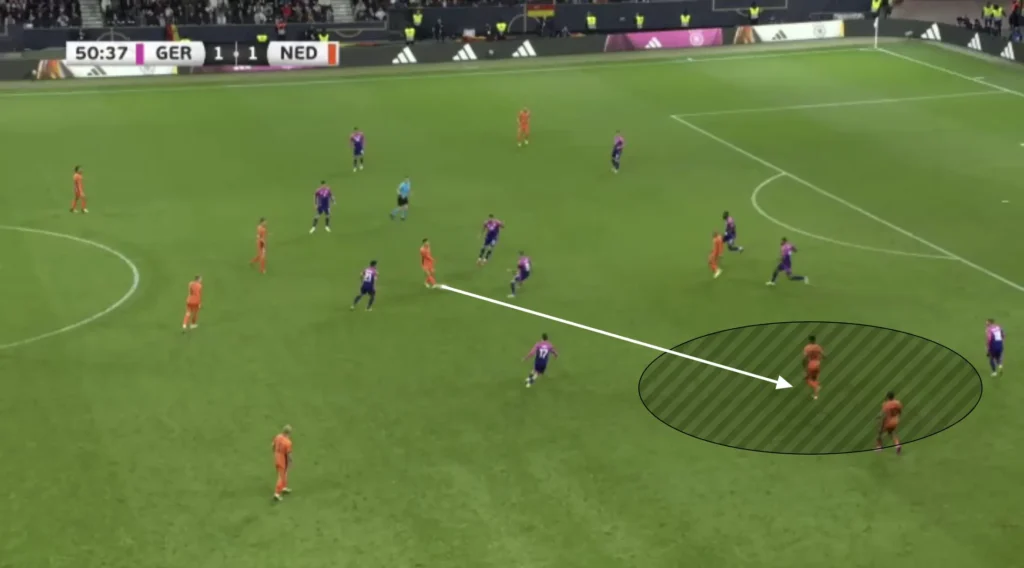
Dropping Outside
When the opposition defends very compactly and does not allow the Dutch attacking midfielders to be found in the pockets, the attacking midfielders will drop outside to receive the ball instead. They will wait for the opposition’s wide midfielders to press the Dutch center-backs and drop out into the space he left open. The opposition center-backs and central midfielders rarely follow these runs, not wanting to open the space in the center, which means that the attacking midfielder can turn and progress the ball unopposed. From there, the attacking midfielders will attack either the center-back to create a 2v1 with the striker or the fullback to create a 2v1 with the winger.
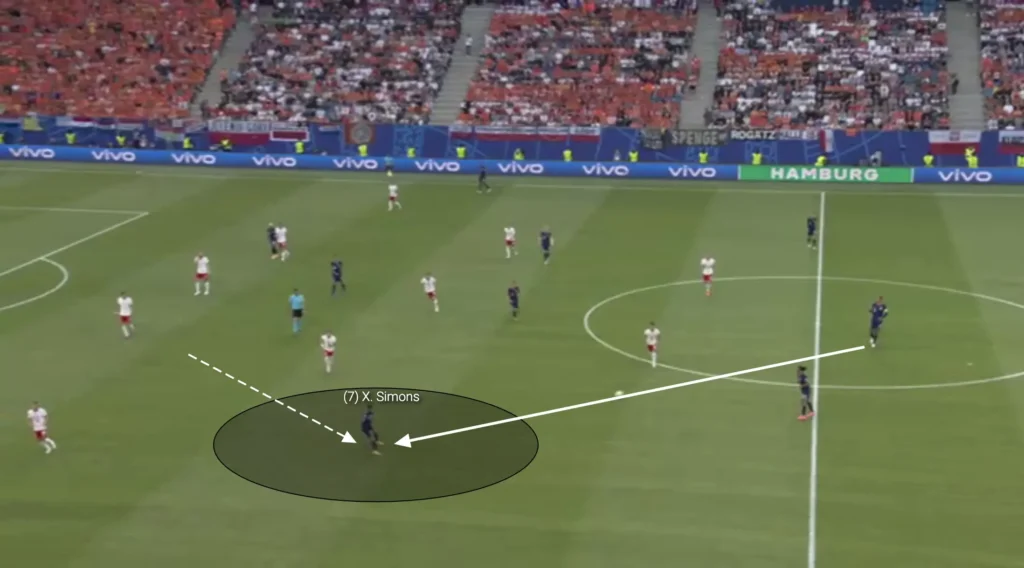
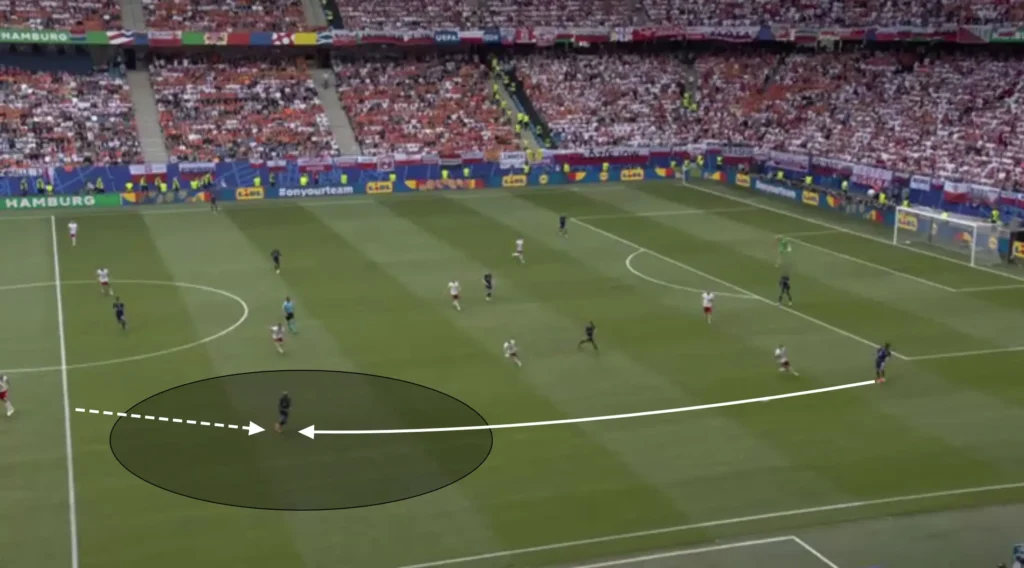
Runs in Behind
The Netherlands wingers constantly make runs in behind when the defenders have the ball, leading to many goalscoring opportunities from dangerous through-balls. This constant threat prevents the opposition from playing with a high backline and closing the space between the lines. Instead, they have to drop the backline and protect the space in behind. This opens the space in front of the backline for the Netherlands midfielders to exploit.
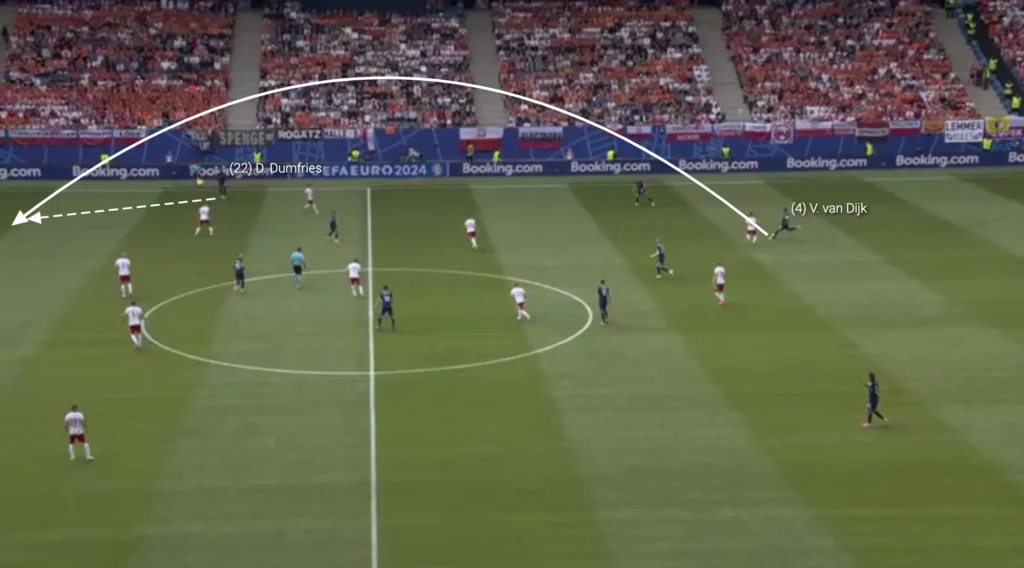
Numerical Advantages
Another massive aspect of Netherlands’ high build-up is their ability to create numerical advantages against the opposition’s defensive line. Their front five naturally becomes numerically superior against a back four, which they are great at taking advantage of.
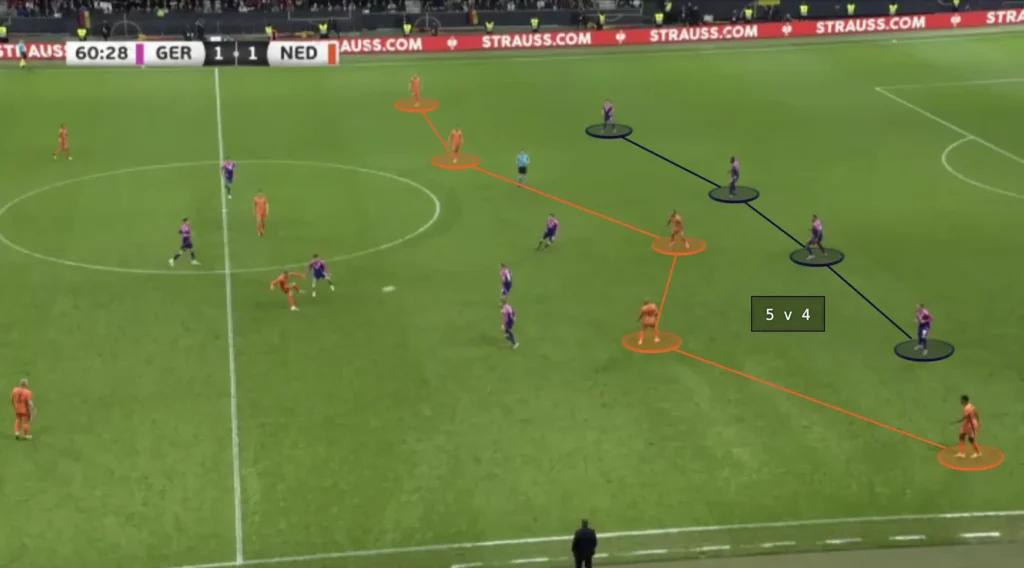
When the defending team is positioned on one side, the weak-side fullback becomes vulnerable to the long switch of play due to the 1v2 against the Dutch winger and attacking midfielder. The attacking midfielder will make a run in behind, the fullback will follow that run, and the space for the winger out wide will be opened. Koeman’s team often capitalizes on this by getting the ball to the winger and creating many opportunities from 2v1 situations on the wing and in the half-spaces.
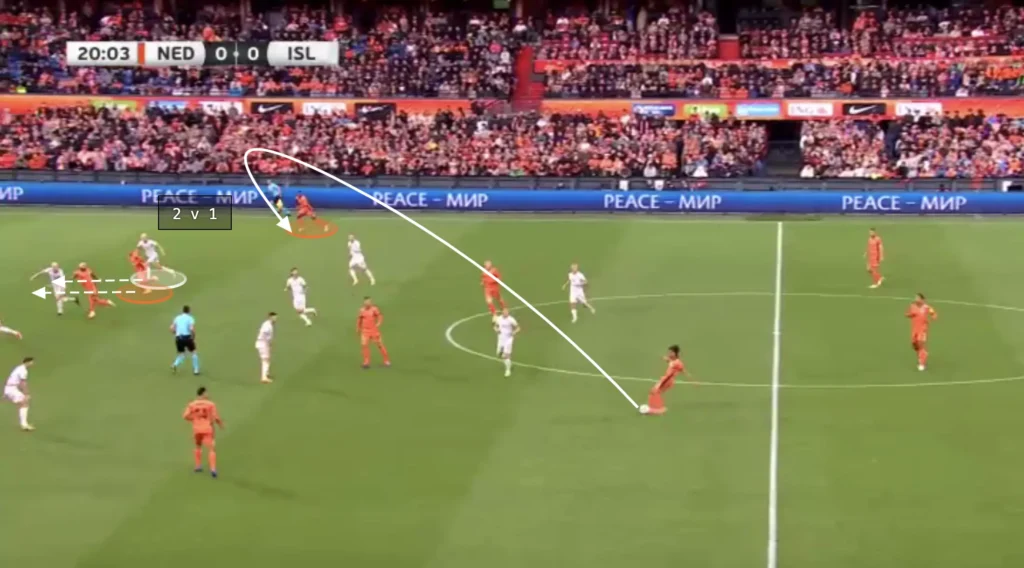
Final Third
Attacking the Half-Space
Koeman’s teams usually look to create chances by attacking the space between the opposition center-back and fullback. They primarily do this from the wide areas with underlaps from the attacking midfielders or sometimes the wide center-backs. When the winger receives the ball he will attract the opposition fullback. This opens the space between the fullback and the center-back, which allows the Dutch attacking midfielder or wide center-back to make the underlapping run into this space. The ball can be played to the underlapping player, who can cross the ball into the box or attack his defender in a 1v1 situation.
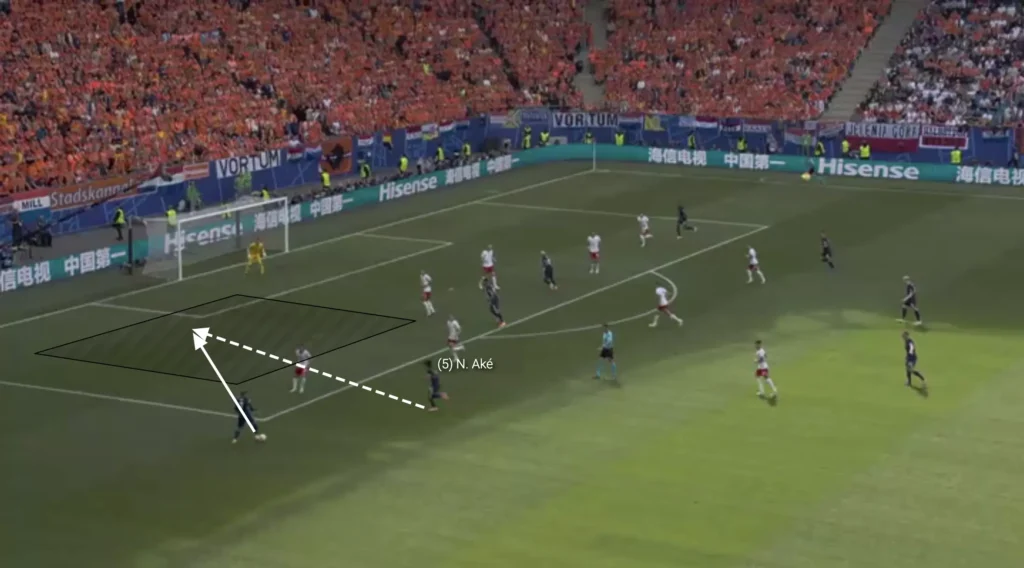
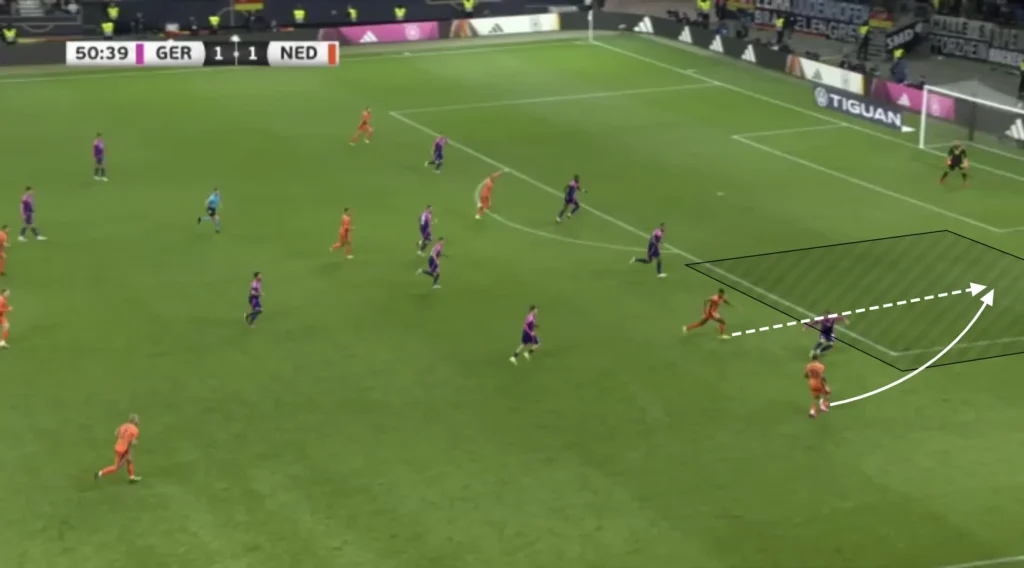
The winger does not have to play the ball to the underlapping player. The underlapping player will often drag away a defensive midfielder, which opens the space inside. The winger can take the ball inside and shoot or find a pass to a free player in front of the backline.
Many Players in the Box
The attacking midfielders and wingers look to make runs into the box when the ball is in the final third, often getting four or five players into these areas to create overloads. The numerical advantages in the box force the defending team to make decisions and leave some players open.
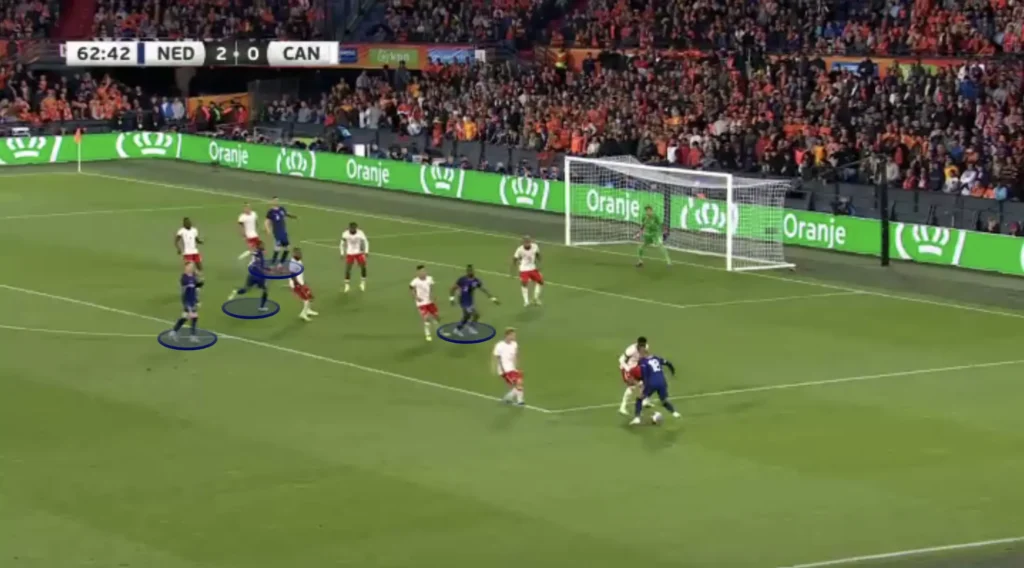
The right-winger, Denzel Dumfries, always makes runs into the box and is one of The Netherlands’ biggest aerial threats. He will attack the penalty area with speed and often wins his duels, allowing him to score headers.
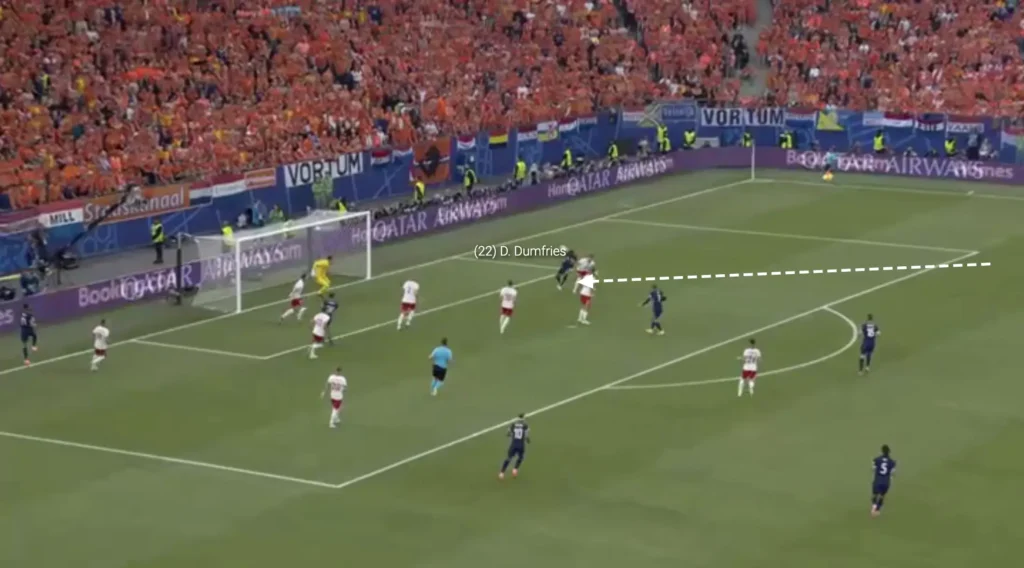
Koeman also positions many players outside the box, ready for the second balls and cut-backs. They always succeed in pushing down the opposition’s defense, which opens the space in front of the backline. The midfielders will often be found in these spaces with cut-backs, and from there, they can shoot or combine with an attacker to create goalscoring opportunities.
Defending
High Press
Koeman places much value on being aggressive without the ball. This shows in Netherlands’ high pressure. Koeman usually wants his team to go man-to-man and intensely press the opposition. They almost use their high press as an attacking threat, scoring many goals from winning the ball high up the pitch.
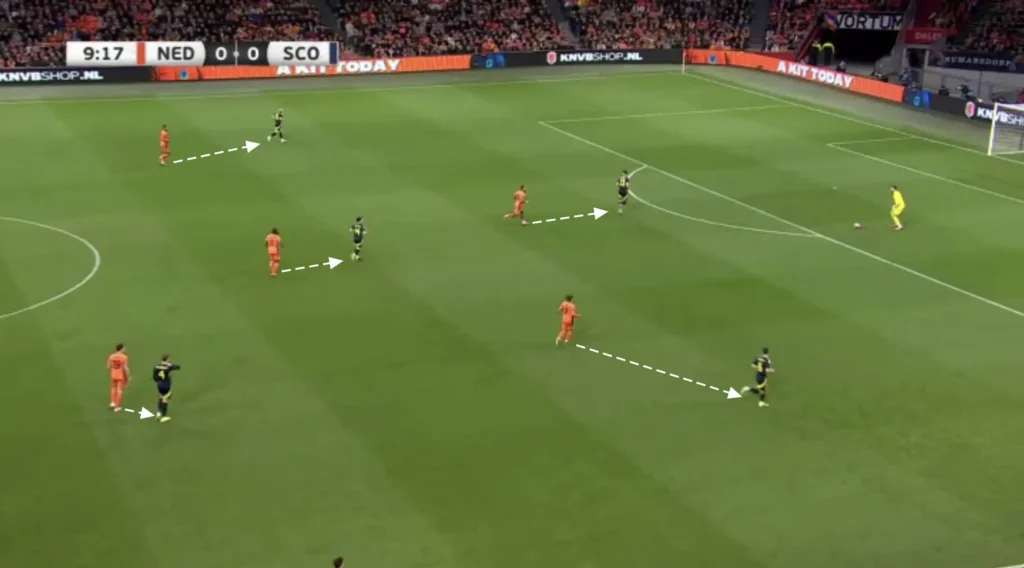
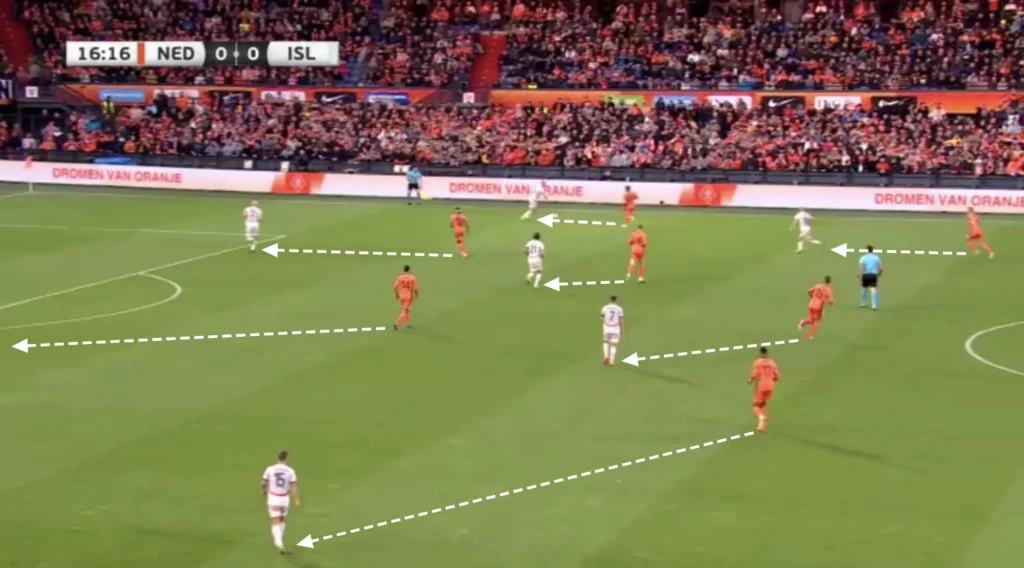
Low Press
Koeman’s Netherlands uses a 1-4-5-1 formation in the low press. They look to set up in a mid-block, always trying to close the center, forcing the opposition out wide. Koeman wants his midfielders to man-mark the opposition midfielders and the wingers to follow the opposition fullbacks. This makes their defensive shape very dynamic. Their midfield five adapts to the opponents, often creating asymmetrical shapes and formations.
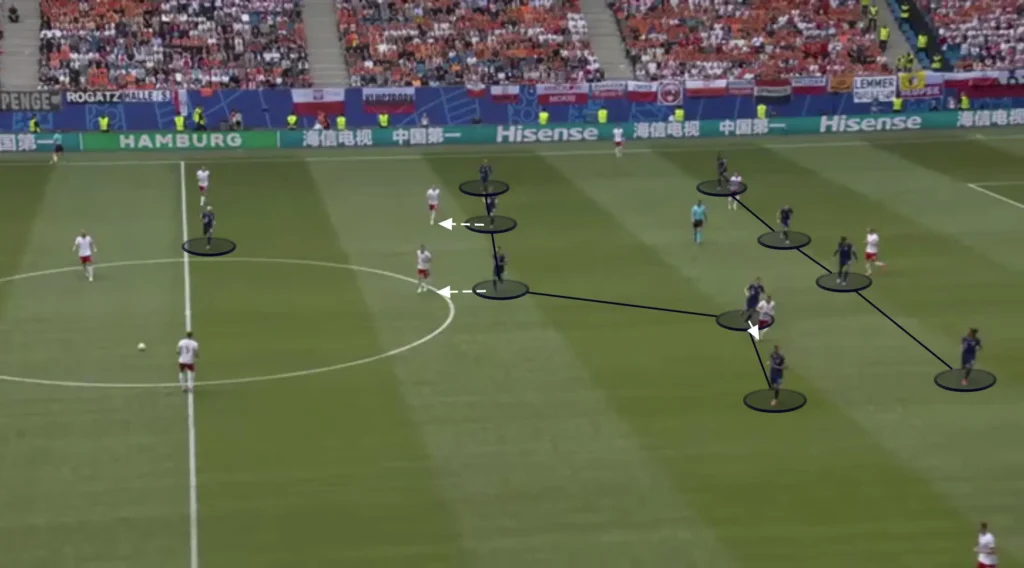
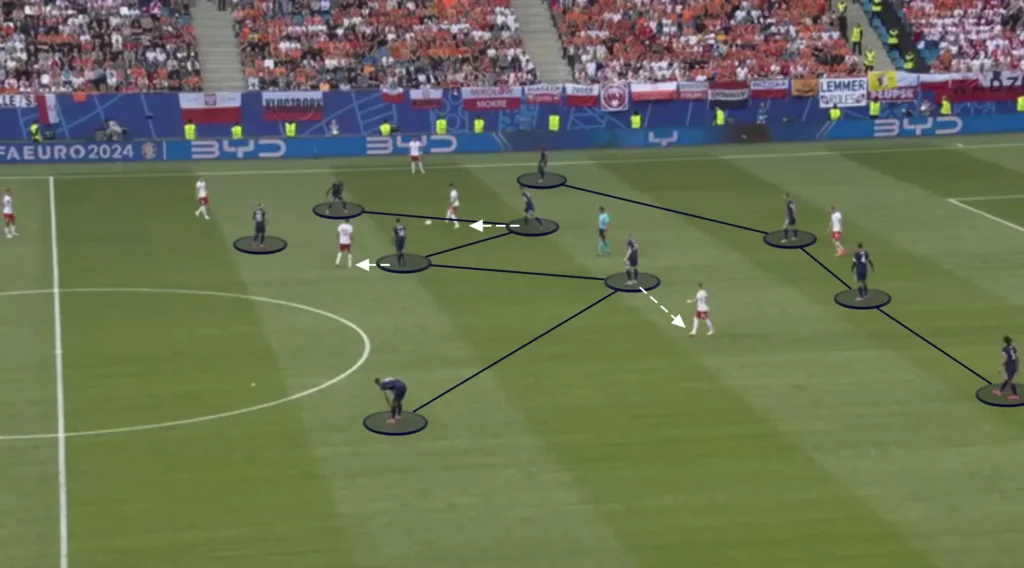
The man-to-man system makes it difficult for the opposition to find free players. However, it can confuse and cause issues for the Dutch players when facing fluid teams that often change positions.
Defensive Transitions
Positioning many players centrally, creating a numerical advantage in the midfield, creates good conditions in defensive transitions. Many players close to the ball after losing possession means that many players can work towards regaining possession. Koeman’s players are also very aggressive in the first seconds after losing the ball. The four or five players closest will immediately jump on the opposition player with the ball and close the distance to cut off any passing lanes. Koeman’s team, therefore, often regains possession directly after losing it. When they regain possession, they try to recycle the ball, not wanting to lose possession again.
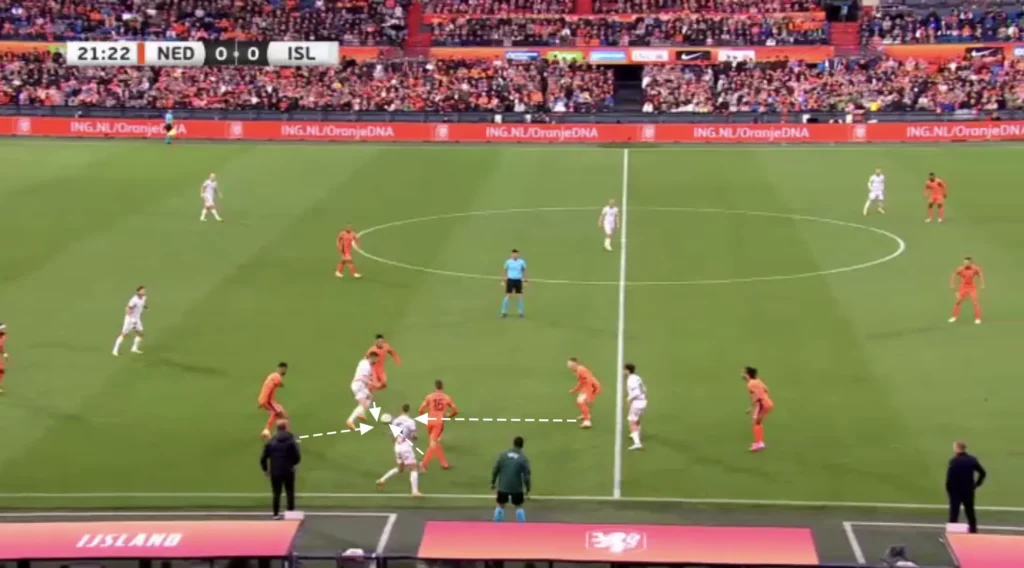
Final Thoughts
In conclusion, Ronald Koeman’s tactical approach with the Netherlands national team demonstrates a blend of traditional Dutch football principles and modern strategic innovations. His use of a fluid formation emphasizes possession-based play, quick transitions, and tactical versatility. Koeman’s focus on solid defensive structures, combined with dynamic attacking movements, has revitalized the team’s performance on the international stage.
This tactical analysis reveals how Koeman’s strategies have leveraged the strengths of key players, fostering a cohesive unit capable of adapting to various opponents. As the Netherlands continues to evolve under his leadership, the insights provided in this analysis highlight the effectiveness of Koeman’s methods and the promising future for Dutch football. Fans can look forward to seeing the team’s tactical growth and success in upcoming competitions.
